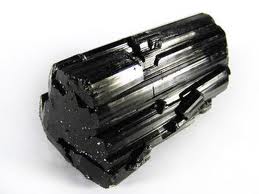Tourmaline
Tourmaline - The Electric Stone

Tourmaline is a naturally occurring mineral widely used as a semi-precious gemstone, and comes in many different shapes and colours. It is unique in that it Tourmaline has a high natural output of Negative Ions, Alpha Waves and Far Infrared Rays (FIR).
It was first discovered in Sri Lanka in 1703 and is now found in all parts of the world. Tourmaline can be black, transparent or any translucent shade of red, pink, purple, yellow, green, blue, brown or amber. It can also appear as a lovely combination of any of these colours. Some of the largest deposits of Tourmaline in the world have been found in Brazil, Pakistan, Afghanistan, America, Madagascar, and in many parts of Africa.
Scientists have long been intrigued by the unique electrical and magnetic properties of tourmaline. Benjamin Franklin, the inventor of the lightning rod, possessed at least one tourmaline stone and is said to have used it in his experiments. In 1880, Pierre Curie, co-recipient of the Nobel Prize in Physics (with his wife, the famous Marie Curie), discovered with his brother Jacques, a mineralogist, that tourmaline carries a weak electric charge when it is heated (pyroelectricity) or when pressure is applied to its surface (piezoelectricity). In 1986 research in Japan confirmed that tourmaline carries a faint but constant electric charge of 0.06mA, which is why tourmaline continues to be known as "the electric stone," especially in Asia. Japanese researchers also found that no matter how small tourmaline is ground or crushed, it is still capable of conveying an electric current, a positive and a negative electrode existed on both ends of the crystal, and the electrodes never disappeared unless tourmaline was boiled near 1000°C. This electrical charge enables Tourmaline to produce far infrared photon energy, negative ions, and alpha waves.
Ionic Balance Bands contain black tourmaline, which has been ground up into a fine powder and added during the manufacturing


